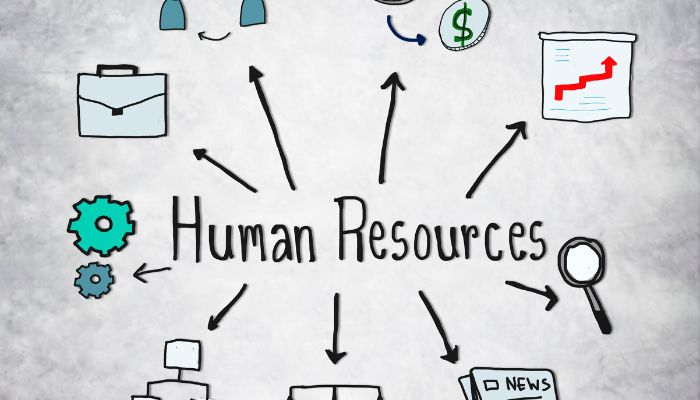It is hard to prevent employee burnout if managers are not sure where it originates. In the previous century, the idea of burnout itself was unfamiliar to supervisors as they led hordes of workers through their motions day after day. Since, however, organizational behaviour has been studied and deliberated enough. When the first mention of preventing employee burnout came up in 1974 in the United States, it was a social phenomenon. Although the World Health Organization (WHO) did not recognize occupational burnout as an established medical ailment until recently, research has been conducted to understand it against the background of study in exhaustion, depression, and self-esteem.
Understanding workplace stress
In the year 2019, WHO defined occupational burnout as a chronic mental occurrence – chronic workplace stress. Interestingly, WHO believes that workplace stress can be handled. The theories on how to prevent employee burnout also originate in the early 1970s. And when it has not been addressed adequately and continues to interfere with the wellness of working professionals, so much so that they cannot continue to be professionally efficacious, it is categorized as employee burnout. Although the study of workplace burnout started in America, research has continued globally, and mitigating circumstances and contrivances were placed singularly on the team leaders and managers.
In India, the pandemic has pushed the working population to some of the highest numbers of stressed one across world populations in Asia – at 29%. 41% of Indian workers are unable to separate work from their personal time due to the pandemic and this has further contributed to the stress levels among Indians.
It is now generally accepted that if employees become indifferent towards their jobs despite trying to achieve a better association, feel stress at the thought of attending work to the point of feeling physically ill, and don’t feel hopeful about the prospects of improvement, it could very well be burnout. And it is up to facility managers to prevent employee burnout by stages – by first creating an environment in which the workforce feels safe discussing feelings of negativity. Although a top-down approach is favored, the seeds sowed to prevent employee burnout are laid by facility managers who conduct awareness huddles, posters, and sessions on burning issues that can spiral into uncontrolled stressors. This grassroot-level execution relies with the facility managers serving the organization.
Related Reads
- How To Avoid Employee Burnout
- Tackling The Issue Of Burnout At Workplace
- Preventing Employee Burnout In The Organization
Preventing employee burnout – who is responsible
It is the role of the manager and every other stakeholder in the workplace to take the stigma out of talking about how to prevent employee burnout. To prevent burnout, the first stages lie in letting workers express opinions about what makes jobs tough or easy. Even the tough areas of jobs can be made tolerable, if not pleasant. Only hands-on managers who are involved in the process and invested in their employees’ well-being would bother to get down to this level of granular details.
Mapping out responsibilities in preventing employee burnout
While the core of preventing employee burnout centers around looking for ways to make the main tasks and modes of operation easier, there are a host of supportive ideas to prevent employee burnout. These are ancillary activities that contribute to the general ambiance of the workplace, making it a friendly place conducive to mental well-being and pleasant feelings to be centered around one’s chosen vocation. Some examples are:
Mood analysis surveys: Employee portals are an excellent starting point for gauging employees’ mental state and finding out details about which areas of their professional lives are contributing to mental stress.
Social network: A workplace is a community too. Mere sharing can prevent employee burnout – and this is true regardless of whether it comes about in an intentional or casual manner. Even teams unrelated to each other and workers in any vertical may interact and feel relieved when they share their mutual hopes and disappointments. Such freestyle interaction should not only be allowed but encouraged by facilities managers.
Active stress-relief: Games, Q&A sessions, forums for discussing grievances, and activities for mind-refreshers can be planned by facilities managers. They need not take up a lot of time. Rather, some can even be impromptu, causing spontaneous participation by those present during, say, break time.
Work-life balance: Facilities managers should focus on helping the staff find a work-life balance that suits their lifestyle and interaction needs. Even at the workplace, to prevent employee burnout, one of the fine balances to achieve is interaction with co-workers and scheduled time during which employees can focus on work uninterrupted.
Ad-hoc requests: Another major set of queries that often fall to facilities managers is making the software and hardware required by the employees to fulfill their roles available to them. Prioritizing these requests or anticipating them saves a lot of stress for all involved. Additionally, maintenance and tech-support also come under the purview of facility managers.
Preventing employee burnout is a collective effort on part of the entire organization. But a beginning can be made by the facility manager in taking the major stressors out.
References:
- How can facility managers help prevent worker burnout? | Services Futures
- World Health Organization Recognizes Burnout As A Syndrome | Keranews.org | Syeda Hasan | June 14th, 2019
- Employees in India face increased burnout at work during pandemic: Report | The Economic Times | October 7th, 2020






